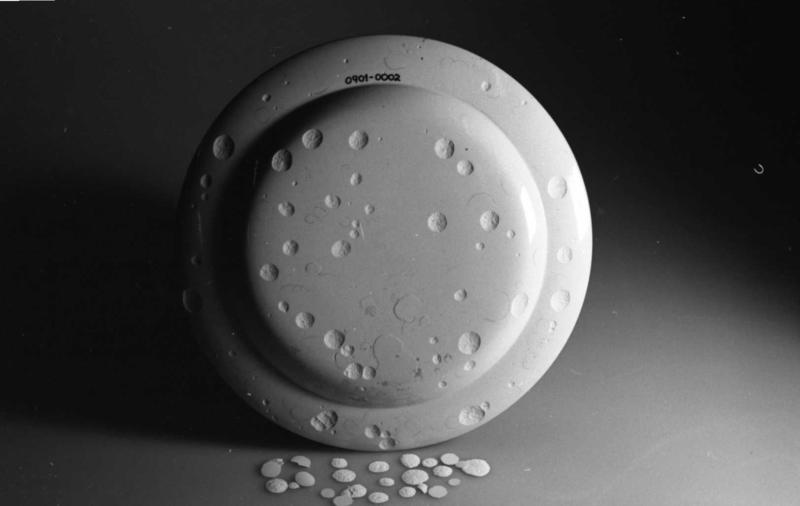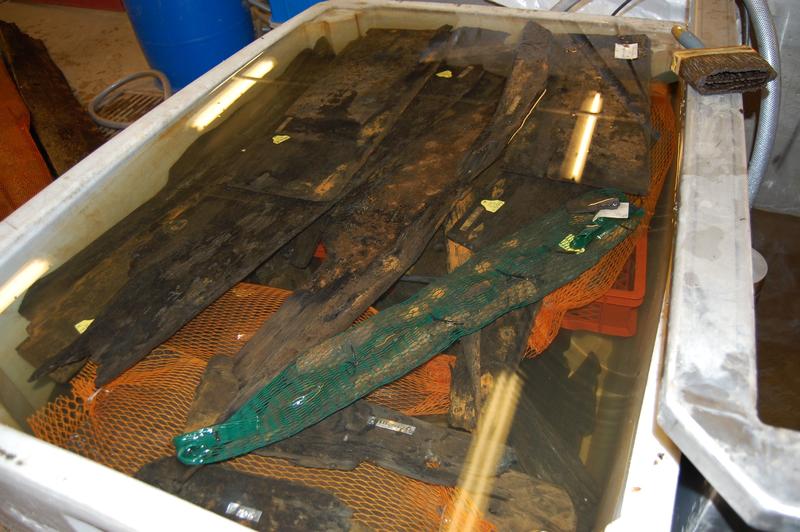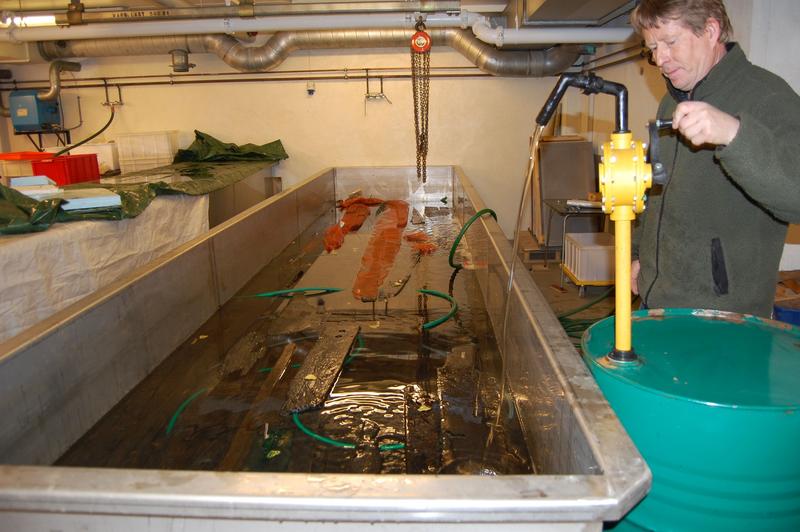- 1/1
Maritime archaeological finds
The largest number of finds comes from coastal shipwrecks or harbours. It is usually only when a site is threatened, whether by human activity or other processes, that an excavation will be undertaken and finds taken in to the museum. Otherwise, in situ preservation is the preferred course of action. Shipwrecks on the seabed, for example, can be surveyed and documented, then covered again and left where they are, provided the preservation conditions are favourable.
Degradation of materials
How well objects are preserved in wet soil or on/in the seabed depends on whether the objects are organic or inorganic, and the chemical, physical and biological conditions of the environment they are deposited in. Organic, waterlogged materials (e.g. wood, textiles, leather) deposited in compact, anaerobic soil or sediments can survive many degradation processes for hundreds of years. The preservation of inorganic materials (e.g. stone, ceramics, glass and metals) can require widely varying environments. Many metals are highly vulnerable to corrosion in salty, marine environments. Stone, ceramics and glass, on the other hand, are better suited to withstand such conditions, but are susceptible to marine fouling, and removing such fouling from a surface without damaging the object can be challenging. In addition, certain materials (e.g.ceramics, stoneware and porcelain) found in saltwater contexts must have soluble salts rinsed out of them before drying in order to prevent degradation.
- 1/1
White stone ware plate damaged by salt crystallisation. Norsk Maritimt Museum
Conservation of maritime archaeological finds
Most conservation efforts are put into slowing the degradation of objects, preferrably stopping it completely. Our aim is for an object to be stable under certain given climatic conditions. In general, light, temperature and humidity are the primary climatic factors that need to be controlled. Hygroscopic materials may make objects change shape or otherwise be damaged at varying levels of humidity.
Shipwrecks and marine wooden objects
Wood, even when no longer a tree, can be considered a living material. The hygroscopic qualities of wood, in combination with its tendency to bend, twist and shrink differently depending on the growth pattern and how it has been cut, presents a challenge when conserving a wooden object in its original shape during its transition from a wet to a dry state. Waterlogged wood may often have a degraded surface due to bacterial erosion. The more degraded a wood cell is, the more water it will contain, and the less solid matter. If object surfaces consisting of such degraded wood cells are allowed to dry, they will crack and collapse. As the surface is primarily where tool marks, surface treatments and other human interactions with an object are to be found, we want to preserve the surface! To prevent drying, waterlogged archaeological wood is therefore kept in water until it can be treated.
- 1/1
Barcode 6 boat timbers stored in water while awaiting conservation. Norsk Maritimt Museum
PEG conservation of waterlogged wood
Polyethylene glycol (PEG) is a water soluble wax often used to impregnate waterlogged archaeological wood. While there are alternative and often better methods for conserving small wooden objects and objects made from composite materials, boat parts and larger wooden objects are more commonly handled here at the NMM, and as such, PEG conservation is common at the museum. After having been cleaned and recorded, the wooden object is submerged in a PEG solution. As the percentage of PEG in the solution is increased over time, normally in 6 month intervals, the wax will gradually replace the water in the cells. When having reached the desired concentration of PEG, we are able to dry the wood without the cells collapsing. The wax lets the cells keep their original shape after the water has evaporated.
If an object is to be dried directly after PEG treatment, the concentration should be close to 100%. This will result in a stable timber, which will be relatively dark and heavy, with a waxy surface. Excess surface wax can be heated with hot air and removed.
- 1/1
Timbers from the Barcode 6 boat found in Bjørvika, Oslo. A small amount of low molecular weight wax is added during the initial phase of conservation. Later, only high molecular weight wax (which is solid at room temperature) is added. Norsk Maritimt Museum
Freeze drying waterlogged wood conserved with PEG
Ending the PEG impregnation at a lower concentration is possible if combined with vacuum freeze drying, in which case a PEG concentration of about 40% is deemed sufficient. When freeze drying an object with a high water content, the water molecules will transition directly from the solid phase (frozen) to the gas phase (water vapour), bypassing the intermediate liquid phase. This process is called sublimation. At normal atmospheric conditions, this is a very slow process. In a vacuum, this process can be sped up, but a freeze drying tank filled with boat timbers can still take as long as up to six months to reach the desired level of dryness.
By sublimation from ice to water vapour, frozen wood cells with a 40% PEG concentration can retain their shape during the transition from frozen to dried. The surface of freeze dried timbers pretreated with PEG will be more robust than if freeze dried without the PEG pretreatment.

Pål Thome



